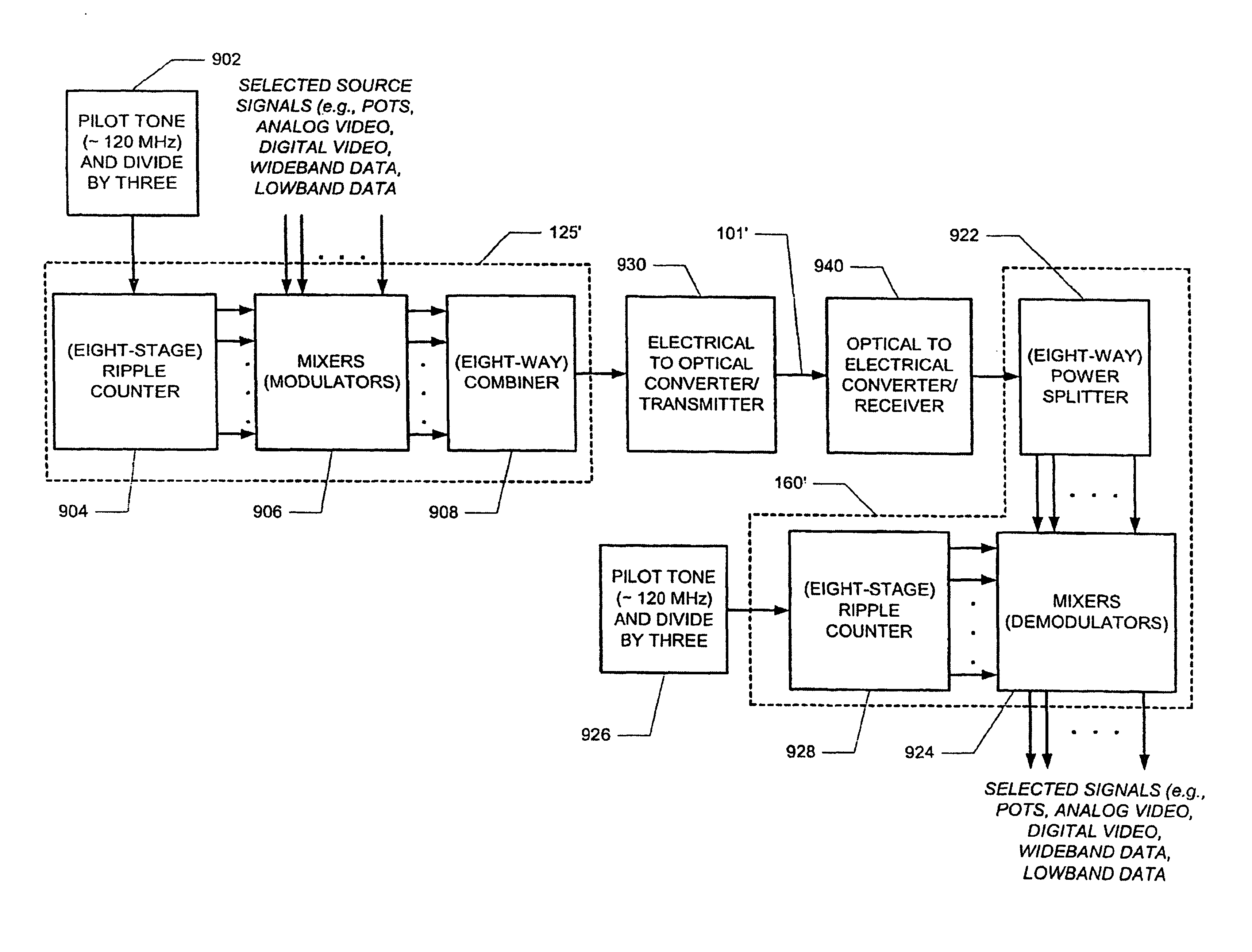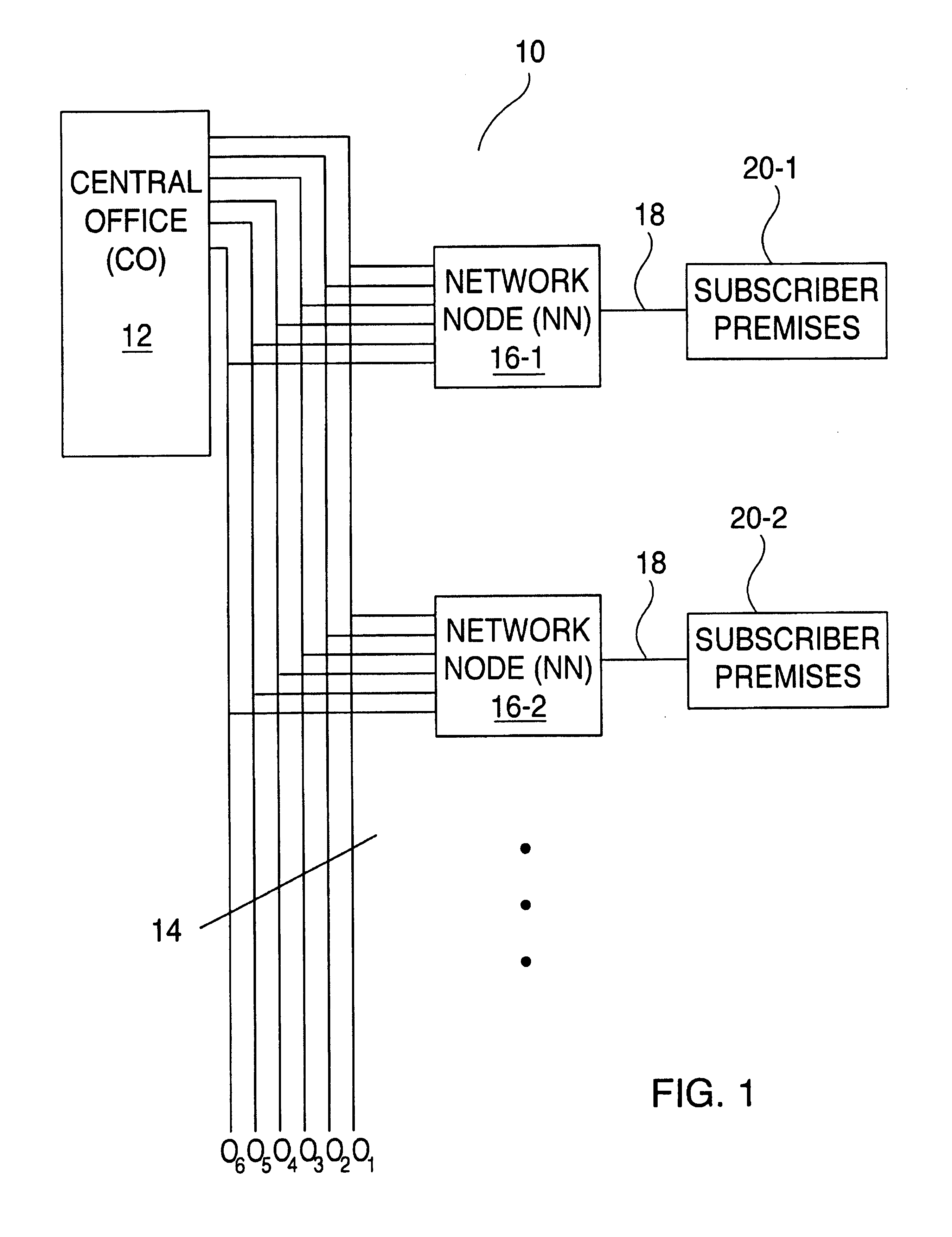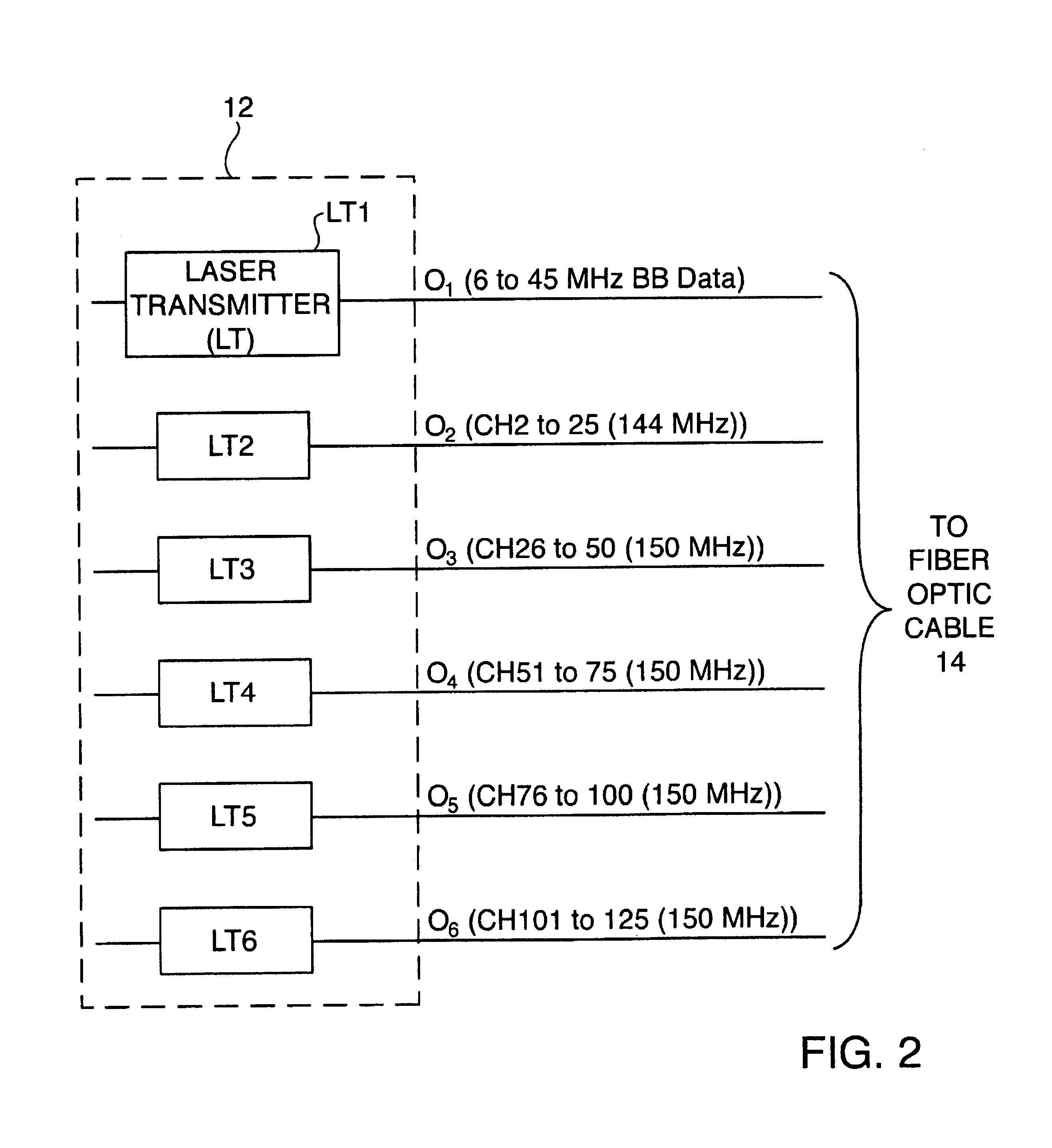Methods and apparatus for generating local oscillation signals
a local oscillator and signal technology, applied in the field of generating local oscillator signals, can solve the problems of loss of revenue, loss of services, loss of central station control of signals, etc., and achieve the effects of reducing the overall cost of the system, preventing theft of services, and reducing equipment and costs
- Summary
- Abstract
- Description
- Claims
- Application Information
AI Technical Summary
Benefits of technology
Problems solved by technology
Method used
Image
Examples
second embodiment
2.4.2 Second Embodiment
[0068]Recall from FIG. 5 that data transmission may occur from the central office to a subscriber via a central office RF combiner 125 and a subscriber receiver 160. Similarly, data transmission may occur from the subscriber to the central office via a subscriber RF combiner 170 and central office receiver 140. FIGS. 9 and 10 illustrate exemplary embodiments which facilitate data transmission from the central office to the subscriber and from the subscriber to the central office, respectively.
[0069]In the following exemplary embodiment, it is assumed that the downstream optical wavelength is 1310 nm and the upstream optical wavelength is 1550 nm. In this way, the two streams can use the same fiber and yet be separated. The downstream (e.g., CATV) bandwidth may be provisioned as follows: the band from 54 MHz to 600 MHz for analog video and 600 MHz to 750 MHz for digital video. All of these channels may be combined in the RF domain utilizing cable TV channel com...
PUM
 Login to View More
Login to View More Abstract
Description
Claims
Application Information
 Login to View More
Login to View More - R&D
- Intellectual Property
- Life Sciences
- Materials
- Tech Scout
- Unparalleled Data Quality
- Higher Quality Content
- 60% Fewer Hallucinations
Browse by: Latest US Patents, China's latest patents, Technical Efficacy Thesaurus, Application Domain, Technology Topic, Popular Technical Reports.
© 2025 PatSnap. All rights reserved.Legal|Privacy policy|Modern Slavery Act Transparency Statement|Sitemap|About US| Contact US: help@patsnap.com



